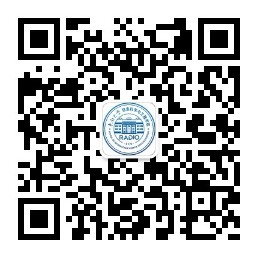I. Course essential information
Course code | B84M0040 |
Course Name | Digital Logic Circuit Experiment |
Credits/Periods | 2 credits/ 33 credit hours |
Period Allocation | Lecture: 3;Experiment: 30;others: 0 |
Course Classification | core course |
Semester | Winter semester in the sophomore year |
Faculty | School of Information Science and Engineering |
Major Program | Information Engineering |
Language of Instruction | English |
Prerequisites | University Physics, Circuits, Computer Structure and Logic Design |
Course Introduction | The course is an important practical course in conjunction with the basic course of Digital Circuits and Systems for undergraduates who are studying Digital Circuits and Systems. The course is to master basic theoretical knowledge, be familiar with digital logic devices, and learn to use the basic method of logic design to complete the design, assembly and debugging of simple logic circuits, master the use of common instrumentations, master electronic design automation methods, have necessary experimental skills, and prepare for subsequent related courses(such as computer principles and interface technology, computer composition and structure, digital signal processing, digital communication, etc.). Prepare the necessary basic knowledge for the study, and lay a necessary foundation for the study and work of various electrical majors in the future. The teaching mode is in the form of an open experiment. The experimental devices are selected independently, debugging equipment and system software are assembled independently. Students can independently complete experiments and write reports, and cultivate students' ability to integrate theory with practice. |
II. Course content and Time allocation
1. Use of common laboratory instruments; common equipment and devices; installation and use of virtual instruments (2 credit hours/in class)
Describes the use of oscilloscopes, multimeters, power supplies, logic analyzers and other instruments, the naming method of devices, pinout, the basic structure of the chip, performance indicators, etc., the main features of the experiment board, the function, installation, connection and debugging of virtual instruments.
2. Experimental content (32 credit hours/in class)
No. | Experimental Project
| credit hours | Experiment Introduction | Experiment type | Experimental Requirements | Main equipment, grouping and other notes |
1 | Device usage | 3 | LED, LED 7-segment display; signal generation and measurement, device experiment. | Verifiability | Compulsory | Computers, virtual instruments, devices, each student should complete tasks independently. |
2 | Combinational Circuit Design Experiment | 3 | Use logic gates to complete the design of combinational circuits. The function of combinational logic circuits is given by the instructor before each test. The requirements include: receiving input, completing functions, outputting results, displaying on oscilloscope, and being able to simulate results. | Design | Compulsory | Computers, virtual instruments, devices, each student should complete tasks independently. |
3 | Design and implement functional component experiment | 3 | Use combinational logic function devices and logic gates to complete the design, and debug of complex combinational logic circuits, complete the input and output truth table verification, give the verification result waveform, build and simulate a test circuit. | Design | Compulsory | Computers, virtual instruments, devices, each student should complete tasks independently. |
4 | Sequential logic circuit | 3 | Use D flip-flop to realize the function of synchronous binary counter, display the output data and analyze the self-start function, and analyze the results. | Design | Compulsory | Computers, virtual instruments, devices, each student should complete tasks independently. |
5 | Sequential module experiment | 3 | Use 74161 counter and data selector/multiplexer to design a sequence signal generator with self-start function, write the design process, draw the circuit logic diagram, connect the circuit, verify the experimental results, add continuous clock pulses, observe and record the clock pulses, and simulate the output waveform. | Design | Compulsory | Computers, virtual instruments, devices, each student should complete tasks independently. |
6 | Sequential module experiment | 6 | Design a circuit that can visually observe the integrated shift register, 74HC194 right-shift function (by observing the LED), and provide the design instructions. Given conditions: 1kHz square wave signal, resistors, gate circuits, several LEDs. | Comprehensive | Compulsory | Computers, virtual instruments, devices, each student should complete tasks independently. |
7 | Combinational and sequential module joint application experiment | 6 | Design a flowing LED lights with sequential devices, combinational devices and gate circuits. The flow light is composed of 8 LEDs. It is always 1 dark and 7 bright when working, and this dark light is cyclically shifted to the right. (The topic is changed every year). | Comprehensive | Compulsory | Computers, virtual instruments, devices, each student should complete tasks independently. |
8 | Comprehensive design extension | 6 / 32 | A speed controller is designed on the basis of the last experimental flowing LED lights to realize the change of the circulation speed of the advertising water light. The specific functions are as follows: (1) The flowing LED lights is composed of 8 LEDs, which are always 1 dark and 7 bright when working, and this dark light is cyclically shifted to the right. (2) The speed is divided into 4 gears, namely 1st gear, 1/2th gear, 1/4th gear, 1/6th gear. Set a button, and change a gear every time the button is pressed. (The topic is changed every year). | Comprehensive | Compulsory | Computers, virtual instruments, devices, each student should complete tasks independently. |


